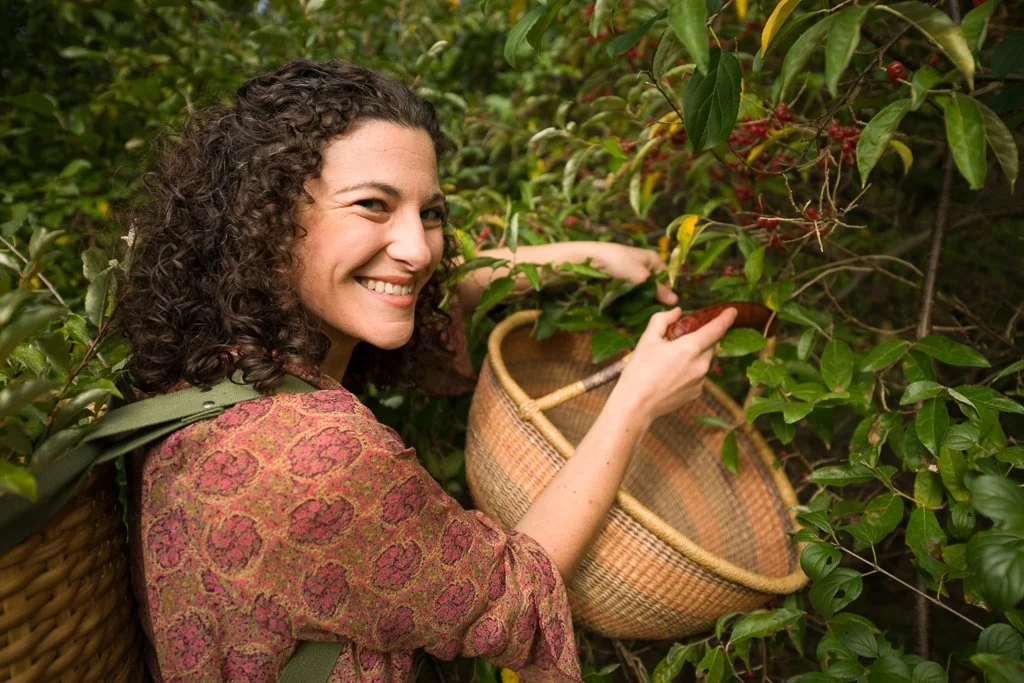Friday, Feb. 23, 2022
St. JOhn’s Lenten Tea
To Brew With Prayer
Entering into the season of Lent, as we have the past two years, we will offer a special St. John's Lenten Tea. Each Sunday evening we share a musical offering from the Compline Choir. Our hope is that as you listen to the meditative chanting of the Compline Choir at home, this original Lenten tea blend will enable you to tap into your senses of scent and taste as well. Once again, we are thankful to Jessica LaBrie, the Wise Woman founder of Blackbird's Daughter Botanicals, a local herbal apothecary in Barrington, NH, for blending this special seasonal tea for us. Please enjoy reading her beautifully written description, and enjoy this gift of tea. The tea will be available to take home this Sunday, February 25. — Olin Johannessen
AS YOU MOVE THROUGH THIS SEASON OF LENT, here is a tea blend to help you focus your intentions, strengthen your devotion, and find comfort and restoration in prayer, perhaps while listening to the Compline choir. Many of these herbs offer respiratory support as well, helping to soothe the throat and clear the lungs, so you can sing along at home if you feel called to raise your own voice in praise!
Throughout time and across all cultures, plants have always held spiritual and symbolic significance. Below are directions and the herbs in your Lenten Tea, with a description of some of their meanings. They were all grown, gathered, and blended with reverence, stewardship of, and devotion to the Earth and all Creation, and packaged by members of the St John’s parish.
Note: This tea is safe for all ages and stages of life, including those breastfeeding and on medication.
THE TEA
Catnip - Since biblical times, this gentle herb has been brewed in teas to soothe and calm the mind, body, and spirit.
Coltsfoot - Also called Son-before-the-Father because the bright yellow flowers bloom before the leaves emerge, coltsfoot is renowned for the way it soothes respiratory tissues, and is used folklorically as a protective herb.
Comfrey - With an almost miraculous ability to heal bruises, wounds, and even broken bones, comfrey’s Latin name, Symphytum, means “to unite,” as Christ’s message and sacrifice inspire us to heal our differences and come together in love.
Lavender - A bitter (yet fragrant) herb, lavender symbolizes purity, silence, devotion, serenity, grace, and calmness. The color purple is associated with the crown chakra, which is the energy center associated with higher purpose and spiritual connectivity. In herbalism, we honor the purifying, healing, and cleansing powers of this herb. The name “lavender” comes from the Latin lavare (to wash) - so let us think of those who washed Jesus’ feet, and how fasting, prayer, and even tears may wash us clean.
Lemon Balm - The lemon balm plant symbolizes virtue, sympathy and compassion. Drinking lemon balm tea while meditating is thought to stimulate trust and patience. Faith is a balm to your heart, as lemon balm can be a soothing balm to your body.
Mullein leaf - A plant of courage, hope, and protection, mullein helps cleanse the lungs so you can sing out!
Passionflower - This plant is strongly associated with Jesus, due to the flower’s appearance. Dark inner flower markings recall Christ's passion; the circles around the inner cross symbolize the circular nature of life; the outward spokes of color alternately indicate hope and the whips used on Jesus during the Crucifiction; the ten petals represent ten faithful apostles; three stigmas represent three nails; five anthers are for the five wounds in Jesus' body; and the blue and white colors represent Purity and Heaven. In herbalism, passionflower helps us relax, calm down, and be still.
Sage - Sage is a clarifying herb, helpful for the lungs and mind, and symbolic of wisdom, clarity, and protection. The botanical name “salvia” comes from the Latin word “salvare” meaning ‘to heal,’ and the word “sage” means a wise, spiritual leader, such as Jesus.
White pine - White Pine is associated with healing, finding one’s purpose in life, protection, purification, and spiritual cleansing. As an herb, pine excels at cleansing and helping one to breathe with ease. It is also the tree under which the leaders from the five tribes of the Haudenosaunee Confederacy came together to symbolically bury their weapons and forever end war between the nations, which is where the phrase “bury the hatchet” comes from, and why White Pine is known as the Tree of Peace.


